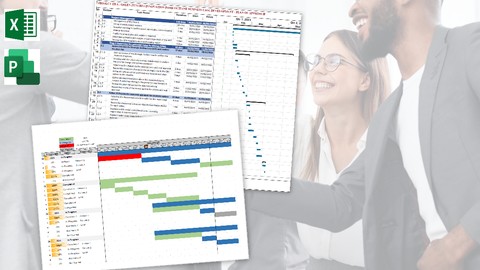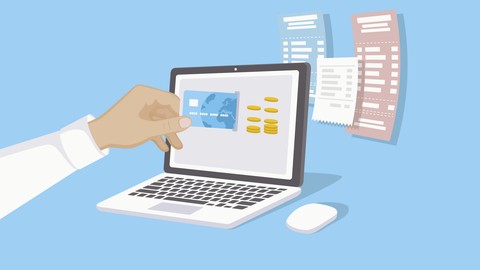Business Data Analytics & Intelligence with Python
Loại khoá học: Operations
Become a Business Data Analyst. Learn Python, Statistics, and Data Analytics using the latest industry tools
Mô tả
What is Business Data Analytics? Why learn Business Analytics? What does a Business Data Analyst do?
Good questions, we're glad you asked!
We now live in a data-driven economy and companies around the world are in a race to make the best data-driven decisions.
Enter Business Data Analysts (a.k.a. future you).
Being a Business Analyst is like being a detective.
You use tools (like Python, Facebook Prophet, Google Causal Impact) to investigate and analyze data to understand the past and predict what is most likely to happen in the future. From there, you'll determine the best course of action to take.
Companies need these Analysts because they're able to turn data into money.
They use the tools and techniques (that we teach you in this course) to quickly interpret and analyze data and turn it into actionable information and insights. These insights are relied upon to make key business decisions.
And making the right decision can be the difference between gaining or losing millions of dollars.
That's why people with these data analysis skills are extremely in-demand. And why companies are willing to pay great salaries to attract them.
Using the latest industry techniques, this business data analytics course is focused on efficiency. So you never have to waste your time on confusing, out-of-date, incomplete tutorials anymore.
You'll learn by doing by completing exercises and fun challenges using real-world data. This will help you solidify your skills, push you beyond the basics and ensure that you have a deep understanding of each topic and feel confident using your new skills on any project you encounter.
And unlike other online courses and tutorials, you won't be learning alone.
Because by enrolling today, you’ll also get to join our exclusive live online community classroom to learn alongside thousands of students, alumni, mentors, TAs, and Instructors.
Most importantly, you'll be learning from an industry professional (Diogo) that has actual real-world experience as a Business Data Analyst. He teaches you the exact tools and techniques he uses in his role.
Here's a section-by-section breakdown of what you'll learn in this course:
The curriculum is very hands-on. But you'll still be walked through everything step-by-step, so even if you have limited knowledge of statistics and Python, you'll have no problems getting up to speed.
We start from the very beginning by teaching you the fundamental building block of data analytics: statistics with Python.
But we don't stop there.
We'll then dive into advanced topics so that you can make good, analytical decisions and know which tools in your toolbox are right for any project.
1. Basic & Intermediary Statistics with Python - Statistics are the basis of analytics and are critical for analytical thinking. Even basic concepts like Mean, Standard Deviation, and Confidence Interval will be a game-changer in helping you interpret, challenge, and present your arguments and reasoning in the professional world.
You'll also learn how to calculate all this and more using one of the world's most popular programming languages: Python.
This section will also lay the foundation for you to understand the more advanced analytics concepts.
2. Linear, Multilinear, & Logistic Regression - You'll learn how and why to use Python for the most commonly used type of predictive analysis: regression.
The idea of regression is to examine the relationship between certain variables, and it's most commonly used in finance and investing, but it's relevant for every sector (if you want to impress your boss, analyze a relationship using regression!).
3. Econometrics & Causal Inference - Now you'll start learning more advanced topics. Econometrics & Causal Inference may sound scary, but they are probably the most important concepts for you to master to become a top Business Analyst.
They help you answer all sorts of problems using analytics and most importantly you'll be a better decision-maker once you learn to use them. You will learn how to tackle biases, like the omitted variable bias or the self-selection bias, which are biases that companies very commonly fall victim to.
Once you know how to these concepts to help you find the solutions, you'll also learn how to better spot the problems.
4. Google Causal Impact - Now we'll start using some of the key tools that real-world professionals use, starting with Google Causal Impact, an open-source package for estimating causal effects in time series.
How can we measure the number of additional clicks or sales that a digital ads campaign generated? How can we estimate the impact of a new feature on your app downloads?
In principle, these questions can be answered through causal inference. But in practice, estimating a causal effect accurately is hard, especially when a randomized experiment is not available. Thankfully, we can use Google Causal Impact to make causal analyses simple and fast.
5. Matching - Here you'll learn how to use data matching to compare data stored in different systems in and across organizations, helping you reduce data duplication and improve data accuracy. By the end, you'll know exactly when and how to use data matching to efficiently match and compare data.
6. RFM (Recency, Frequency, Monetary) Analysis - In this section, you'll learn about a marketing technique called RFM Analysis. It's used to quantitatively rank and group customers based on the recency, frequency, and monetary total of their recent transactions to identify the best customers and perform targeted marketing campaigns.
So what does that mean?
Well, do you think Amazon or Facebook show each of their customers the same things? Spoiler alert: they definitely do not.
The truth is that some customers are essential for companies, and some don’t matter as much. The FAANG companies (and every company using analytics) use RFM Analysis to determine who their key customers are, and how customers should be treated differently (aka the "VIP Treatment" ?).
7. Gaussian Mixture - Now you're really cookin'! Next, you'll learn about using Python to create a probabilistic model called Gaussian Mixture that's used for representing normally distributed sub-groups within a larger group.
Sound complex? That's because it is! But you're going to learn it all step-by-step so that you can use it for your own business or as a professional analyst!
8. Predictive Analytics - Random Forest, Facebook Prophet - Okay now this is the coolest part, where you start to utilize machine learning to predict the future (insert spooky sounds here).
In every company, there's always something that is being predicted, and humans simply can’t do it as well as machines.
Knowing the future means having an advantage over everyone else, and that is precisely the advantage that you'll be able to provide as an analyst by using predictive analytics.
That's why you're going to learn how to use tools like Random Forest and Facebook Prophet to harness the power of machines to predict the future and make actionable plans from that information.
What's the bottom line?
This course is not about making you just code along without understanding the principles so that when you are done with the course you don’t know what to do other than watch another tutorial... No!
This course will push you and challenge you to go from an absolute beginner to someone that is in the top 10% of Business Data Analysts.
How do we know?
Because thousands of Zero To Mastery graduates have gotten hired and are now working at companies like Google, Tesla, Amazon, Apple, IBM, JP Morgan, Facebook, Shopify + other top tech companies.
They come from all different backgrounds, ages, and experiences. Many even started as complete beginners.
So there's no reason it can't be you too.
Bạn sẽ học được gì
The skills to become a professional Business Analyst and get hired
Step-by-step guidance from an industry professional
Learn to use Python for statistics, causal inference, econometrics, segmentation, matching, and predictive analytics
Master the latest data and business analysis tools and techniques including Google Causal Impact, Facebook Prophet, Random Forest and much more
Participate in challenges and exercises that solidify your knowledge for the real world
Learn what a Business Analyst does, how they provide value, and why they're in demand
Analyze real datasets related to Moneyball, wine quality, Wikipedia searches, employee remote work satisfaction, and more
Learn how to make data-driven decisions
Enhance your proficiency with Python, one of the most popular programming languages
Use case studies to learn how analytics have changed the world and help individuals and companies succeed
Develop advanced skills in data analytics and statistics to become a sought-after business data analyst.
Gain a deep understanding of business analysis methodologies and how to apply them in real-world business scenarios.
Gain expertise in data analysis and visualization techniques to effectively communicate insights to stakeholders and drive business decisions.
Master the key concepts and methods of business analytics, including statistical modeling, forecasting, and optimization.
Yêu cầu
- Basic Python knowledge is NOT required, but is helpful.
- A willingness and enthusiasm to learn and take action.
Nội dung khoá học
Viết Bình Luận
Khoá học liên quan

Đăng ký get khoá học Udemy - Unica - Gitiho giá chỉ 50k!
Get khoá học giá rẻ ngay trước khi bị fix.


















Đánh giá của học viên
Bình luận khách hàng